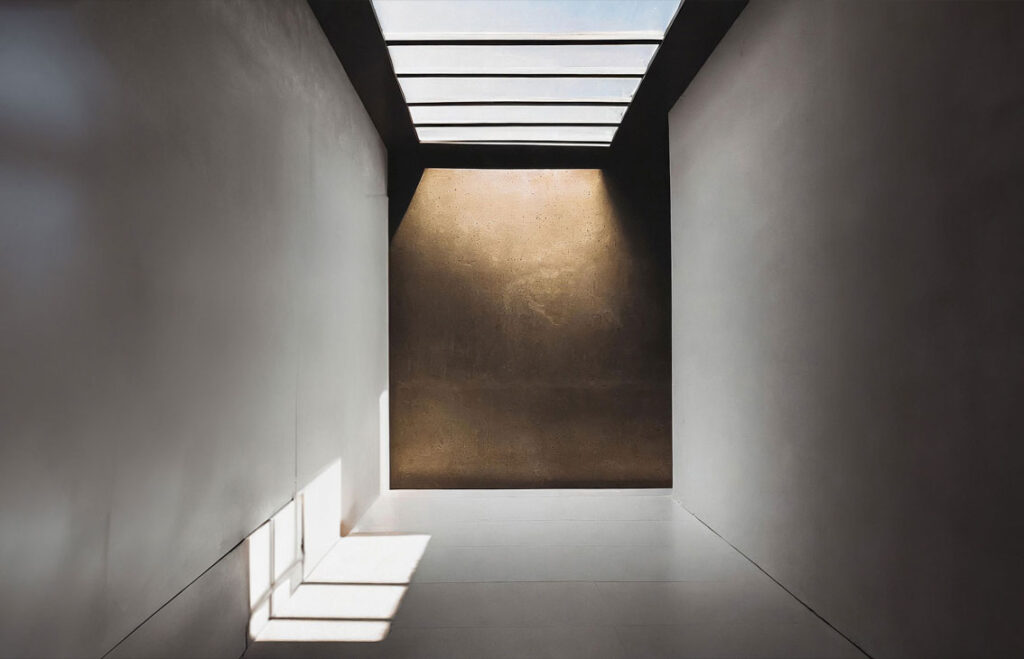Hans Bolz
Essence invites us to explore architecture’s soul. Guided by the principle of WHAT-HOW-WHY, our course, titled SPACE+BODY=PLACE, was a journey from intuition to explanation – a reverse exploration of spaces, a personal odyssey.
Embarking on Intuition: Essence urges us to feel atmospheres before analysis. Overlooked in our visual-centric world, this journey unveils the essential elements shaping our built environment.
Journey Through Essence: Our semester unfolds in two acts. Immersing ourselves in spaces, we decode their essence retrospectively. Extending this learning to non-architects, “Essence” shares a profound appreciation for spatial qualities.
Bridging Architectural Essence: Essence aims to bridge the gap between architects and users. Delving into the essence of spaces, we cultivate a shared language, elevating conversations about spatial quality. In this booklet we are trying to understand where the very essence of architecture shapes both architects and users alike.
A visit to the Maria Regina Martyrum memorial church in Berlin, built in 1963 by architects Hans Schädel and Friedrich Eber…
WHAT

VASTNESS
As I step through the gate into the courtyard, I’m immediately struck by the stark surroundings. A solitary nun stands in the vast courtyard, leading a group on a guided tour. Her voice carries faintly from a distance, like a soothing whisper amidst the silence. Cool air hits my face as I walk further. My eyes are drawn to the white monolithic main building, protruding from the rough, dark stones of the outer walls that seem to absorb the light. Their texture is harsh, and the darkness they exude, creates an eerie contrast with the purity of the place. As I arrive at the center of this space, I am drawn to the door.
HOW
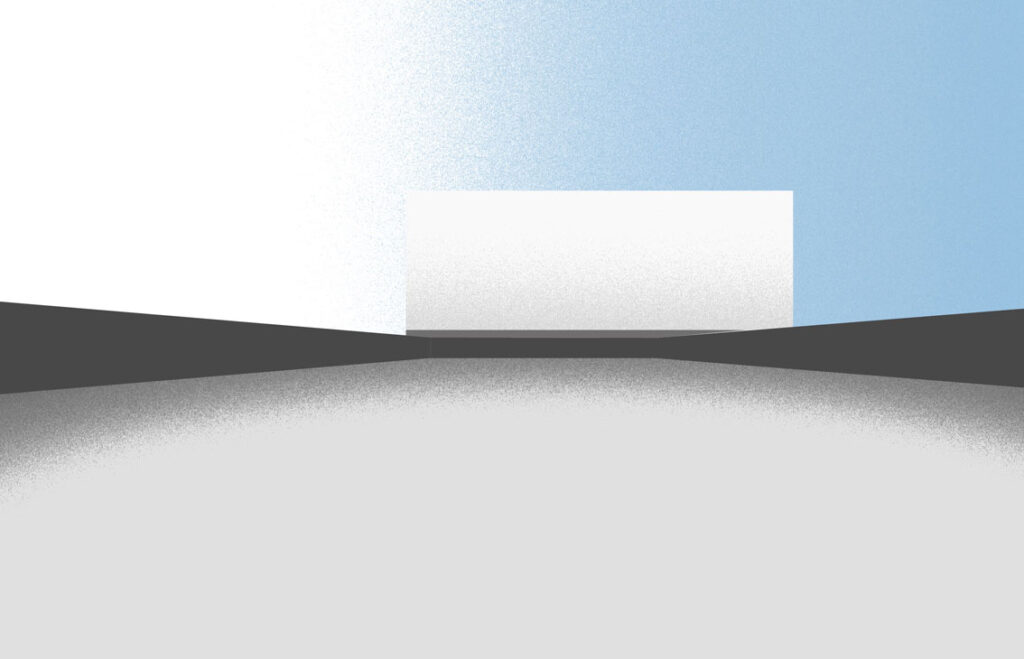
VOID
The space compels one to step into its center and linger. It’s a place that contains nothing and yet, or precisely because of that, exerts a profound impact. By omitting any structures or focal points for the gaze, the empty space in front of the church creates a unique atmosphere. The surrounding walls prevent this atmosphere from dissipating, simultaneously keeping the influences of the outside world at bay.
WHY

SANCTUM
The Maria Regina Martyrum Church in Berlin stands as a poignant memorial to National Socialism victims. More than a building, it embodies resilience, remembrance, and spiritual refuge. Architectural choices, materials, and light contrasts narrate its story. Massive walls outside contrast a serene interior, creating a spiritual ambiance. Light, shadow, zones of threat and hope honor the persecuted. Crafted by Hans Schädel and Friedrich Ebert, it transcends as a sanctuary of history, faith, and human resilience. In essence, it’s not just worship but a testament to hope amidst chaos.

WILDERNESS
The vast paved square amidst concrete and gray tones now radiates a new, soothing green. Its size and expansiveness remain intact, as does the tranquillity. The square becomes more inviting to people but keeps its atmosphere.

WHAT

ILLUMINATION
In the main chamber of the church, my eyes are drawn to the empty walls and the light streaming in from above, casting its gentle glow upon the rough concrete walls. The indirect illumination creates an atmosphere that is difficult to put into words. I become serene and move with caution, careful not to disrupt the fragile atmosphere. The austere materials and shapes seem to resonate within my thoughts. I am calm and deeply focused.
HOW

LIGHT
The light streaming in from above, coupled with the towering walls, it captivates the gaze. It bestows upon the space a monumental ambiance, simultaneously exuding tranquillity.
WHY
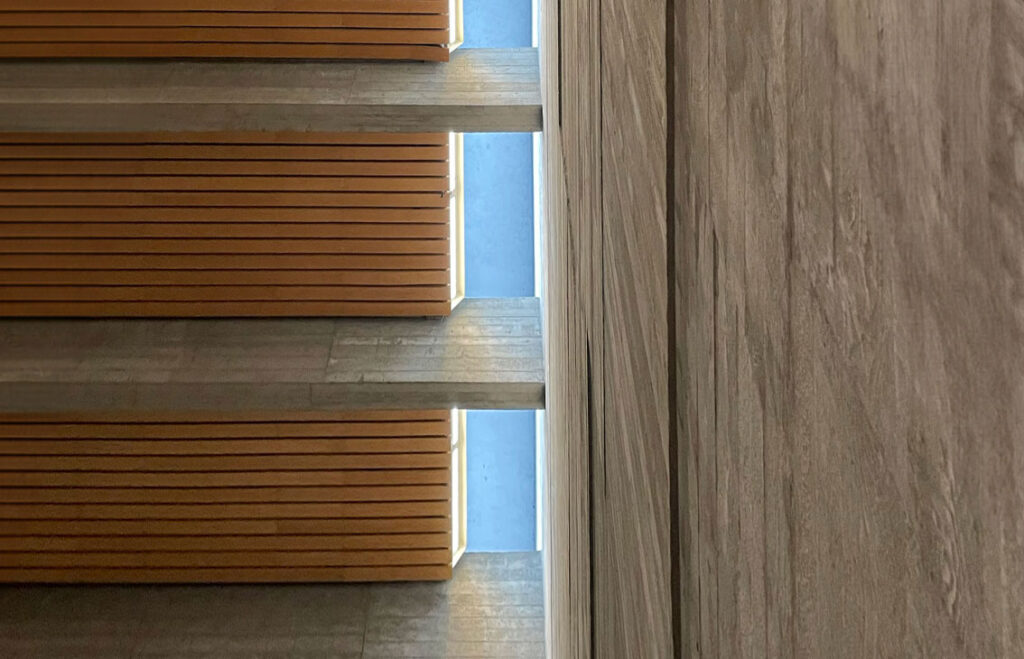
ILLUMINATE
The high, unadorned walls convey a sense of austerity and contemplation. The indirect lighting from above enhances the spiritual atmosphere and emphasizes the transcendental character of the space. Schädel’s architectural choices create a profound and reflective atmosphere that establishes a connection between visitors and the profound historical narrative embedded within the walls of the church.
WHAT
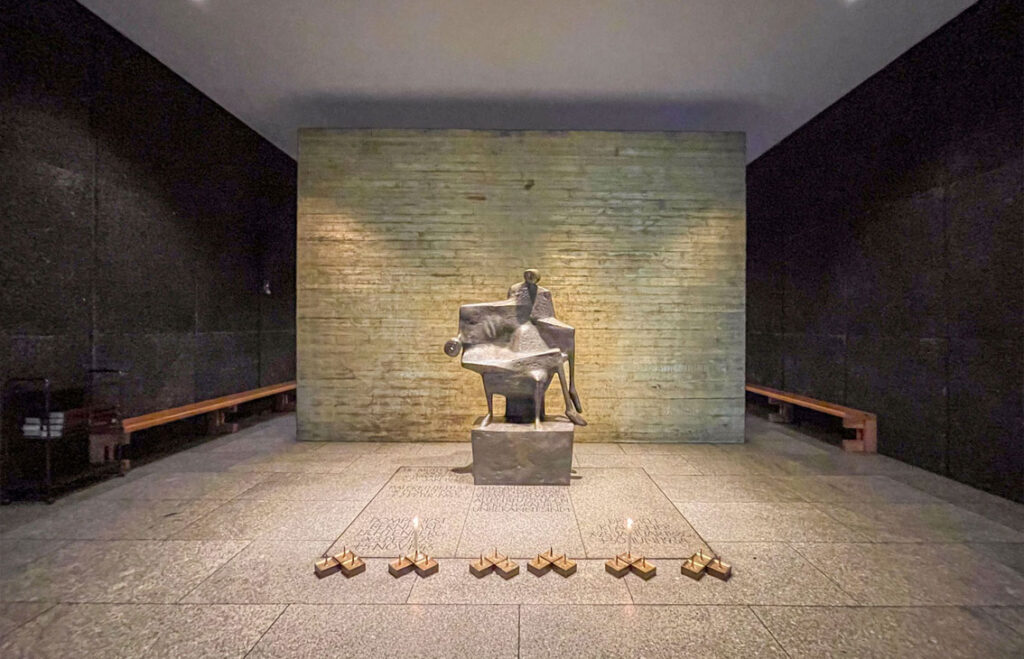
TRANQUILLITY
When the door closes, the outside world fades away. No noise, no light, no thoughts permeate. The lower, smaller chamber of the church is deserted. I move slowly, as even my footsteps seem to disrupt the silence. I sit on a bench, positioned at the side of the room. As I jot down my notes, the pencil on paper becomes the loudest sound in this space. Amid the stillness and solitude, I feel remarkably close to myself, as if the distractions of the outside world have been forgotten.
HOW

HUE
The sound and light-proofing of the lower chamber create a sense of detachment from the outside world. The lower ceiling and compact space proportions foster a deep connection with the room. The centrally positioned golden glowing wall generates an atmosphere imbued with sanctity.
WHY
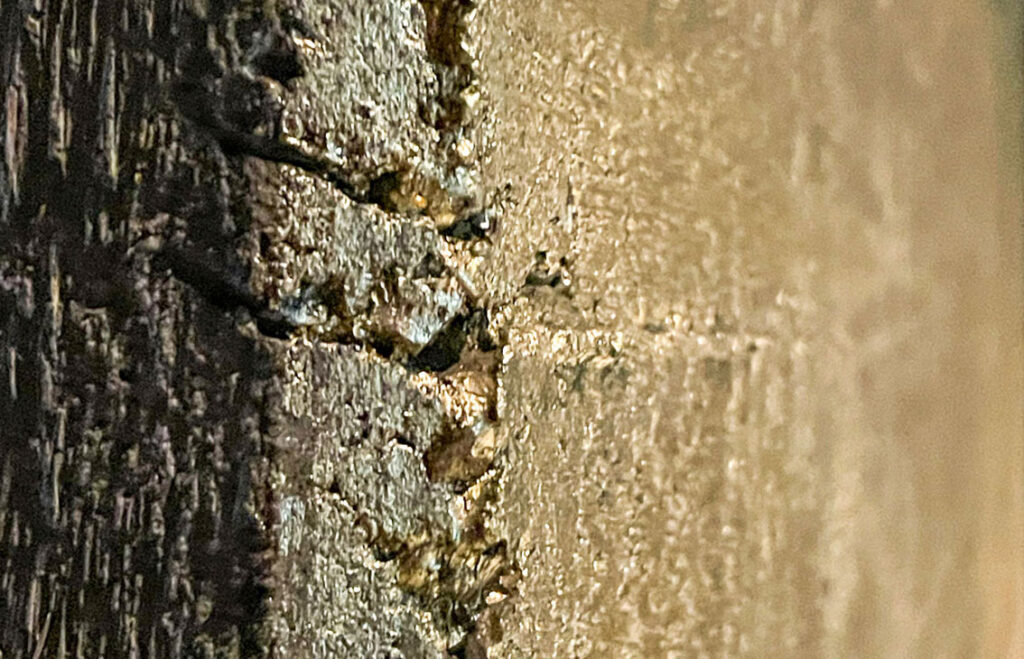
REMEMBRANCE
The serenity of Maria Regina Martyrum Church’s lower chapel, designed by architect Baldur Schönfelder, encapsulates profound historical and cultural nuances. Post-World War II, the tranquil ambiance pays homage to those who resisted the Nazi regime. The simplicity of the space fosters reflection, accentuated by a distinctive golden wall at its center. Symbolizing resilience and hope, this golden partition stands as a testament to the spiritual journey from darkness to light, making Schönfelder’s architectural choices a poignant representation of the church’s historical narrative and a sanctuary for contemplation.
